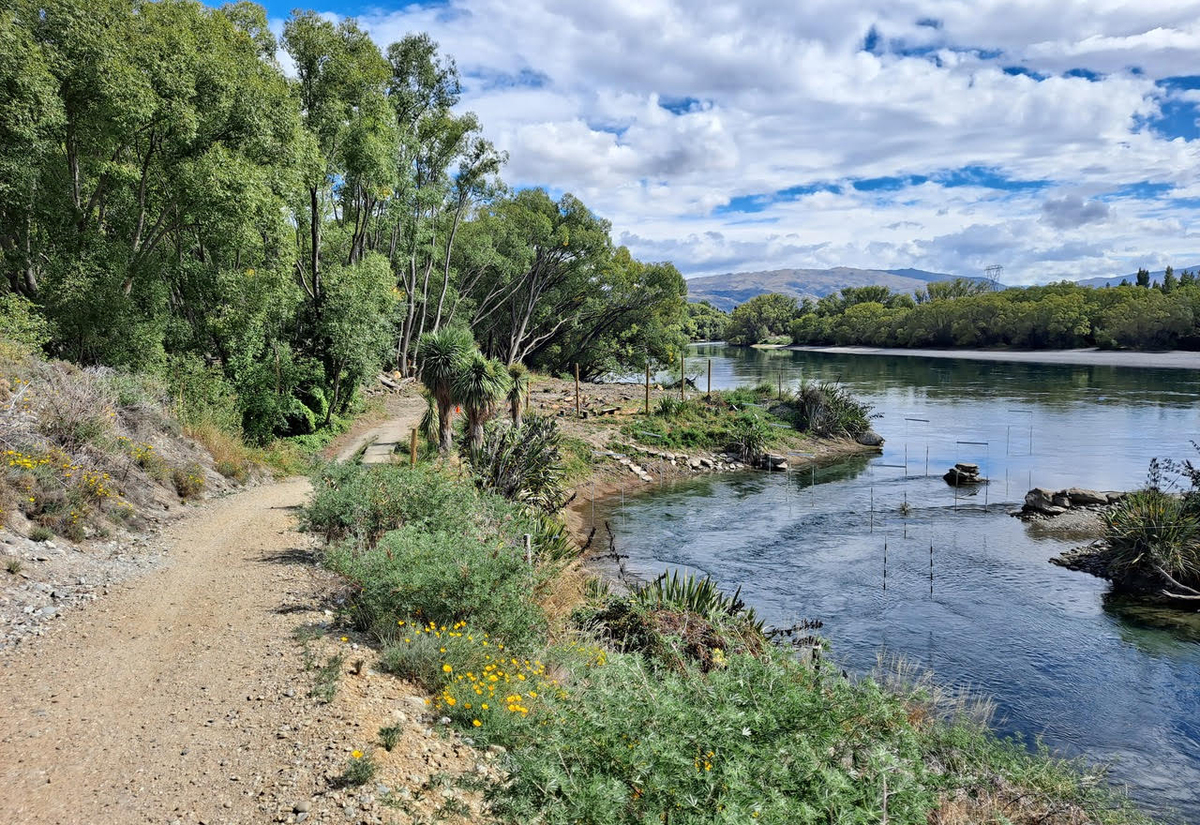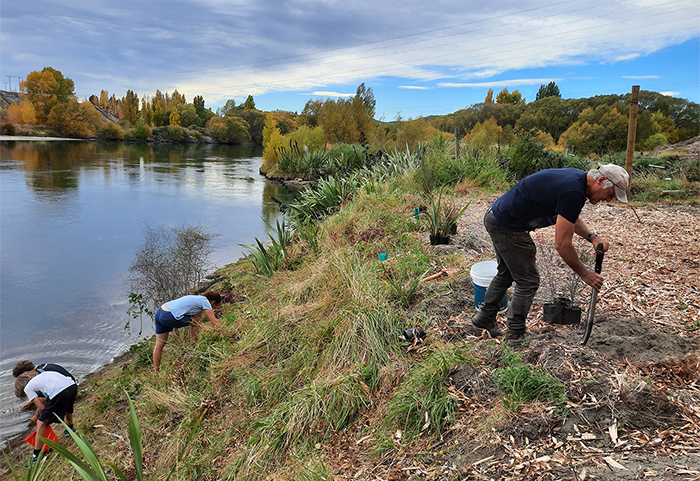New plantings to enhance banks of the Mata-Au
Mary Hinsen
16 April 2021, 9:42 PM
 This view on the Clutha is set to get better, thanks to community efforts.
This view on the Clutha is set to get better, thanks to community efforts.The willows have gone from the riverbank along the kayak course in Alexandra, and been replaced by native species thanks to a local collaboration.
The kayak course on the Mata-Au Clutha river and on the side of the Millenium track got a facelift last weekend, thanks to the Central Otago Whitewater club, the Haehaeata Natural Heritage Trust and community help.
Central Otago Whitewater Club President Gordon Raynor says the club had been re-planting and looking after the area along the kayak course for 15 years.
The recent effort is just another part of their efforts in custodianship.
“We started restoring the riverbank after Transpower first removed willows about 15 years ago and it’s been an ongoing project since then.
“Over the years we’ve had floods damage our course and cause erosion on the island, so we’ve had to do some major erosion control there.
“Floods damaged the course twice last year, so we completed a rebuild last Spring.
“With the willows on the bank starting to fall over, we talked to Scott at the regional council and he agreed they needed to come out.”
What was left, Gordon says, was a sandy mess, so the club held a working bee, salvaged and mulched as much of the wood as possible to provide mulch for the area.
The club got Haehaeata trust members involved, and a suitable planting programme was developed specifically for the area.
Local landowners, Stan and Daphne Randall, gave the volunteers access through their property, and Gordon says their goodwill had made it all possible.
As a result, a group of volunteers have now planted approximately 90 native plants - a carefully chosen mix of riparian, dryland and forest species.
Haehaeata trust spokesperson Rachael Baxter says the inclusion of forest species was experimental for that area.
“It will be interesting to see what species succeed in the tough environment,” she says.
“The area was previously mined and is now just silt with no real body to it, so it can dry out quickly.
“This could be a blueprint for future plantings along the Mata-au Clutha River.”

It was all hands on deck for the planting, and now everyone is asked to help the new plants to grow.
Manaaki Whenua Landcare Research data shows the species most commonly used to control bank erosion throughout New Zealand has traditionally been salix or willow, but that there was now a push away from introduced species to using native species and a focus on biodiversity.
Vegetation is widely accepted as a key factor in contributing to a river or stream’s bank stability.
The roots increase bank stability by protecting soils against being caught up in the water flows, and root mass and density provide soil shear strength, protecting against gravity collapse of undercut banks.
Otago Regional Council spokesperson Scott Liddell says the willows they had removed from the kayak course had self-sown there, rather than being planted for erosion control, and had become dangerous.
“The problem was they kept constantly breaking in the wind and falling into the channel there, and it was a real problem for the kayak club,” Scott says.
“As a regional council, we’re not responsible for landscaping, but we do manage channel capacity, to ensure the river can maintain flow, especially at times of flood.
“It was great that the kayak club took the opportunity to tidy the area up once the trees were gone.”
Scott says they had left the willow root balls intact, in order to help maintain the integrity of the bank.
This means the new planting could focus more on increasing biodiversity, with all the benefits that would bring.
Rachael says it would be great if everyone in the community could get involved in ensuring its success by watering the new plants as they passed, buckets have been provided for that purpose, and also weeding when needed.
“The area is an asset for the whole community; it is used by a large number of people and not just the club.
“So, we encourage everyone to help out and be involved.”
Images supplied


